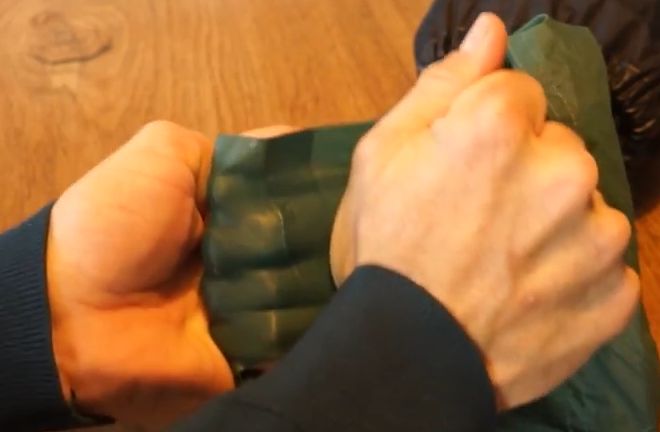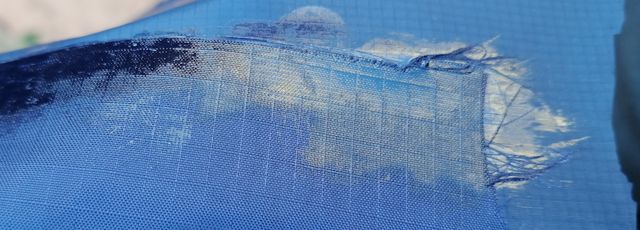Glueing silnylon fabric versus sewing
I am planning to sew my own tent, and have purchased some very thin silnylon fabric for that purpose:
https://www.adventurexpert.com/product/10d-silnylon-fabric/
...yep, all the way from Slovenia, as couldn't source it in Australia. Remarkably, it only took a week, shipped by DHL.
This is 10D (denier) fabric, very thin, and coated both sides with
silicone so also very slippery. Extremely difficult to sew, so when I
watched this video on glueing silnylon, was most intrigued:
https://www.youtube.com/watch?v=_5yGxdJveZk
A snaphot from that video, showing trying to pull the glued pieces apart:

...he was unable to pull the two pieces apart.
In previous work with constructing solar water distillers, I
determined that silicone sealant bonds very strongly to existing
silicone sealant, so it looks promising bonding two silicone-coated
fabrics together. This I had to try!
I also have a piece of ripstop nylon from Spotlight:
https://www.spotlightstores.com/sold-by-the-metre/plain-148-cm-ripstop-nylon-fabric/BP80070051002
...doesn't say that it is coated with anything, so presume not.
The silicone adhesive that the author of that video used, is
expensive, but in the comments there is another one mentioned, that is, a
flowable silicone sealant, Permatex Windshield and Glass sealant 81730,
which is available locally, from Repco. So bought a 42g tube of that.
Experimented with both fabrics, silnylon to silnylon, and silnylon to
ripstop, left 24 hours, then did the pulling test. Here is a photo of
the ripstop glued to the silnylon:

Yes, a very strong bond. HOWEVER, if I grab the two pieces separately, at the ends, then they can be very easily pulled apart.
What this means is that the strength is longitudinal only. Would
"longitudinal" be the correct word? Anyway, if there is any weakness at
the join, a tear can start and will rapidly spread.
I found that the ripstop teared off more easily.
I then repeated the experiment with Selleys acetic-cure 401 RTV silicone sealant, this stuff:
https://www.bunnings.com.au/selleys-310g-401-rtv-engineering-grade-silicone_p1231042
Did not thin it, just spread it fairly thinly, left for 24 hours.
Same thing, it tears apart quite easily. However, the silnylon to
silnylon is a noticeably stronger bond (compared to the Permatex sealant), almost to the point where I
might trust it to construct a tarp. But still, once a tear starts, the
tent will fall apart in strong wind.
There is one area where I think glueing is a good idea, at tie-out reinforcements, as this guy does:
https://www.youtube.com/watch?v=Ec8YhQffRj8
...the glueing could be done carefully so that there is no weak point where a tear could start.
So, conclusion is that I will still sew the tent, but consider glueing tie-outs.
Tags: light
